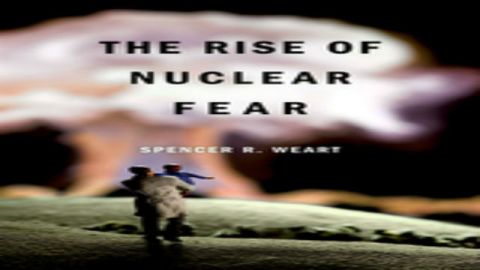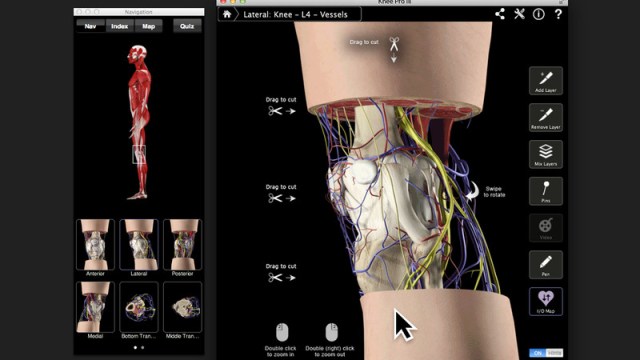The Historic Roots, and Impacts, of Our Nuclear Fear

I remember going to bed one night when I was 11, seriously afraid I would not be alive in the morning. It was October, 1962, and the frightening cold war between the U.S. and Soviet Union, constantly in the news but mostly abstract to me as a kid, had becoming terrifyingly real. I had watched a stern President Kennedy on TV revealing that Soviet missiles were being installed in Cuba and ordering a blockade of Soviet ships. There were pictures of the missile sites, and video of confrontations at sea. The world really was on the brink of nuclear war. I was viscerally afraid, and I wasn’t alone.
But that was long ago, and those fears were well-tucked away…until I started reading Spencer Weart’s fascinating new book, The Rise of Nuclear Fear. It was remarkable how quickly, and powerfully, the feeling of those scary days came back to life. Even more, it was stunning to discover how broadly and profoundly our nuclear fears have shaped our modern world. If you want to understand our acute modern fear of cancer, the roots of environmentalism, what really put a man on the moon, even what turned our 1950s and 60s faith in science and technology into the doubt and skepticism of today, you must read this wonderful insightful entertaining book.
The Rise of Nuclear Fear looks back at our emotional relationship not just with atomic weapons but with nuclear radiation generally, from its discovery by the Curies through Fukushima, a history of how radiation went from “Gee Whiz!” to “OH NO!”, entertainingly woven around how radiation was reflected in popular culture. At the turn of the 20th century, as the scientific and industrial revolutions were bringing so much change and opportunity, Weart tells us that radiation glowed with promise. You could buy radium toothpaste and mouthwash and skin cream. News reports promised that a small amount of uranium could propel a steamship across the ocean, or light cities. Radiation was even seen as the Philosopher’s Stone, the legendary material the alchemists had sought that would give man control over matter. A newspaper headline about radiation declared “Science on the road to revolutionize all existence. No limit to man’s power over nature.”
Radiation’s mysterious powers made it a mainstay of science fiction. Flash Gordon sabotaged the ‘atom furnaces’ that powered the gravity-defying rays of Ming the Merciless’s Sky City, after Ming bragged that “Radioactivity will make me Emperor of the Universe” (add evil laughter here.) Superman’s home planet was destroyed by an atomic explosion. Gene Autry was killed by evil Queen Tikla of the underground civilization of Maurania, but was resurrected in the ‘radium reviving room.”
Radiation and weapons were readily paired in all sorts of popular fiction. Weart recounts one fascinating example of how this would effect world affairs decades later. In the 1940 film Murder in the Air, a U.S. agent guarded the secret of an atomic ray canon that could shoot enemy planes out of the sky. The actor who played the agent was Ronald Reagan, who 40 years later as President would invest billions in just such folly with his Strategic Defense Initiative, a project that most scientists called a sci-fi pipedream without ever realizing where that dream apparently began.
Then, in August of 1945, The Bombs destroyed Hiroshima and Nagasaki, and in a terrible flash our relationship with nuclear radiation exploded into the profound angst that has shaped so many aspects of world history and modern culture. These were far more than just bigger bombs, and Weart writes that they evoked a special sort of fear, of “cosmic power…hell fire…Doomsday itself.” “For all we know,” one broadcaster said, “we have created a Frankenstein.” The suffering of the survivors from the acute effects of exposure to high doses of radiation was quickly labeled “atomic bomb disease” and “mysterious, horrible…atomic plague”. One widely read commentary said “The fear of irrational death…has burst out of the subconscious and into the conscious, filling the mind with primordial apprehensions.”
Those apprehensions only grew more ominous when in 1954 the radioactive fallout from an atmospheric nuclear weapon test fell far beyond the predicted exclusion zone, contaminating a Japanese fishing vessel, the Daigo Fukuryu Maru, or The Lucky Dragon. Back in port, crewmen got sick. One of them died. Images of the men appeared in newspapers and magazines around the world. The Lucky Dragon incident put the word “fallout” into the popular lexicon, and nuclear weapons now meant not only apocalyptic warfare, but the insidious global spread of carcinogens in our air and drinking water.
This had a huge and unexpected impact, in ways that resonate deeply in society today. The fear of cancer exploded in the United States in the 1950’s. Fear of nuclear weapons and fallout played a huge role in that explosion, carving the dread of cancer deeper into our hearts and dramatically shaping our health choices, and health care policy, ever since.
To try and put the genie of growing nuclear fear back in the bottle, Weart writes that President Eisenhower created the Atoms for Peace program in the mid 1950’s, not so much to develop non-military uses of nuclear technology but as propaganda against our fear of nuclear weapons and fallout, dramatically accelerating the creation of a civilian nuclear energy program. A promotional program by the Atomic Energy Agency promised “the Era of Atomic Power is on the Way.” The White House commissioned Walt Disney to make the widely viewed film Our Friend the Atom.
Despite the fear of nuclear war and radioactive fallout, the propaganda worked, in a post World War II society with a strong faith in the power and promise of science. Three quarters of the people in a U.S. national survey in 1956 supported nuclear power. But at the same time, the world was learning of the birth defects suffered by the children of the atomic bomb survivors, who had been exposed in utero . Now, in addition to cancer, nuclear fallout brought an additional terrible risk, of genetic damage.
Then, in the fall of 1957 the Soviet Union launched Sputnik, the satellite that amazed us, but also frightened us with the reality that missiles could deliver nuclear holocaust literally in minutes. Heightened nuclear fear produced ‘the space race’, one outcome of which was man landing on the moon. Another result of Sputnik was to turn what had been a tiny group of liberal pacifists into the first truly global protest movement, championed by Bertrand Russell and Albert Einstein, to “Ban the Bomb”. Tens of thousands participated in huge anti-nuclear/anti-war rallies in England and elsewhere. Weart cites a number of studies that found that the liberal pacifist ‘Ban the Bomb’ movement of the 50s laid the social, ideological, and cultural foundations for the protests against the war in Vietnam more than a decade later.
Fear of nuclear weapons and fallout also led directly to the creation of the modern environmental movement. Weart reports that Barry Commoner, an early environmental leader, said “I learned about the environment from the Atomic Energy Commission in 1953.” Commoner’s influential publication “Environment Magazine” actually began as “Nuclear Information”. Rachel Carson wrote that she had clung to faith that Nature was “beyond the tampering reach of man.” until radioactive fallout killed that faith, and led to her classic cri de couer Silent Spring, in which she emphasized the dangers of industrial chemicals by likening them to radiation. In the chapter “One in Four” devoted to cancer, she writes about a Swedish farmer who she claims was killed by pesticides, likening him to Aikichi Kuboyama, the crewman from the Lucky Dragon killed by radioactive fallout. “For each man,” Carson wrote, “a poison drifting out of the sky carried a death sentence. For one, it was radiation-poisoned ash; for the other, chemical dust.”
Silent Spring was published in September of 1962. The Cuban missile crisis took place less than a month later, terrifying us, but, in the end, easing our fears of nuclear holocaust. The defense strategy of MAD – Mutual Assured Destruction – actually worked. Neither President Kennedy nor Soviet Premier Khrushchev was mad enough to start a nuclear war. But by this point the fear of anything nuclear was so deep that as the apocalyptic threat of nuclear war receded, and as the 1963 atmospheric test ban eliminated the risk of fallout, the fear was transferred to a new nuclear bogeyman. Weart writes that the fear of nuclear weapons and fallout led directly to the opposition to nuclear power.
He cites several studies which found that from the very beginning, this opposition was strongest among the more liberal environmentalist and pacifist parts of society. “People with a more egalitarian ideology who thought that wealth and power should be widely distributed, were more anxious about environmental risks in general and nuclear power above all than people who believed in a more hierarchical social order.” From that opposition arose yet another of the profound, unpredictable effects of nuclear fear; a coal-based energy policy which has killed hundreds of thousands of people from air pollution and now contributes significantly to the threat to the very climate on which life on earth depends.
Weart’s book, a more concise and entertaining update of the one he published in 1998, moves quickly through Chernobyl and Fukushima. He devotes practically no attention to one key part of the nuclear fear story, the findings from studies of the atomic bomb survivors that have shown that the actual biological risk from nuclear radiation actually is stunningly lower than most people realize. The cancer death rate among those survivors went up less than one percent, and no biological effects at all have been detected among those who received lower doses (below 110 milliseiverts). No multi-generational genetic damage has been detected either. The fear of radiation, understandably so deep because it was born in the face of terrifying existential danger, far exceeds the actual risk. This omission is interesting, because Weart does not hesitate to argue that excessive fear of nuclear radiation is irrational and impedes development of nuclear power as one way to deal with climate change.
But it demonstrates how Weart has not written a pro-nuclear polemic. The Rise of Nuclear Fear is a fascinating, entertaining, insightful history which offers an important lesson that reaches far beyond the nuclear issue itself. By illuminating the roots of our nuclear fears, and describing the vast impacts those fears have had, Weart offers a dramatic illustration of the affective/emotional/instinctive nature of risk perception in general, and a sobering lesson about the powerful and unpredictable ways that fear shapes the course of events.




